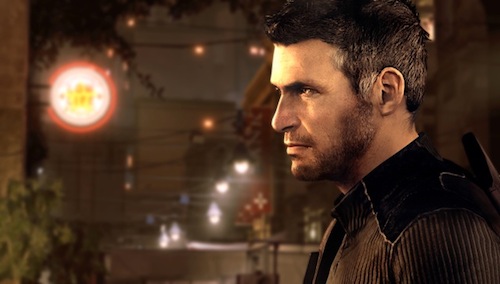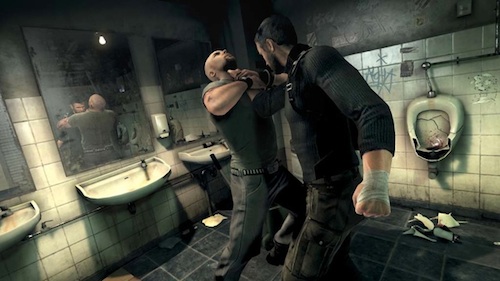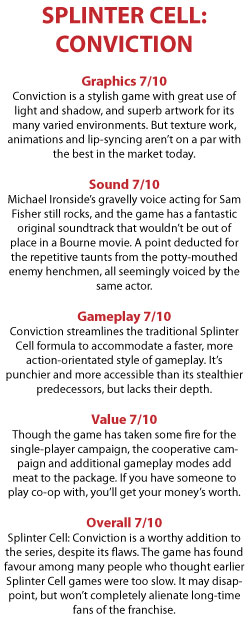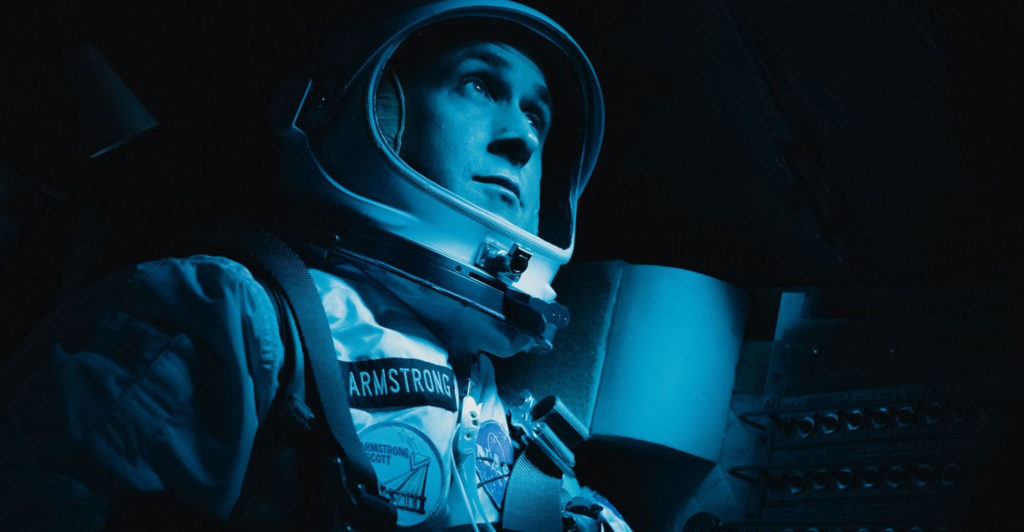
Talk about pressure. Tom Clancy’s Splinter Cell: Conviction is a homecoming for the studio responsible for the best game in a popular franchise, a much-hyped console exclusive for the Xbox 360, and a title that has been in the works for about four years.
Few games could live up to that level of expectation — and Conviction falls just short of being the classic that we’d hoped for. Conviction’s difficult gestation — at one point, most of the work done on the title was scrapped for a fresh start — has produced a game that is troubled, somewhat unpolished but occasionally brilliant.
Ubisoft Montreal’s Splinter Cell: Chaos Theory (2005) set a new benchmark for stealth games with its complex level designs, tight stealth mechanics and range of tactical options. With Conviction, the developer once again promised to reinvent the franchise.
If earlier Splinter Cell games were about patience and planning, the watchwords for Conviction are flow and accessibility. The older games were about sneaking around in the dark as Sam Fisher, carefully isolating enemies, picking them off one by one, and covering your tracks by hiding their bodies.
Sam Fisher’s techniques now mostly revolve around striking from the shadows, disorientating the bad guys and taking them down quickly before they can respond. Batman: Arkham Asylum’s predator stealth is one obvious comparison. The game also reminded me of the “breach and clear” gameplay of Ubisoft’s Rainbow Six: Vegas games.
Some of the changes to the gameplay are justified by the story. Fisher is no longer the cool and calculating agent of the previous games. He’s an enraged brute on the trail of his daughter’s killers. He doesn’t care how many bodies he leaves behind or if anyone finds them. Like Daniel Craig’s James Bond or Matt Damon’s Jason Bourne, he is a bludgeon rather than a scalpel.
Now the player can no longer choose to knock enemies out or tranquilise them, but can only kill them outright. And you can also no longer hide their bodies from their friends. For much of the game, Fisher also doesn’t have access to many of the high-tech gadgets he depended on in earlier Splinter Cell games.
Perhaps the most significant addition to the gameplay is the “mark and execute” mechanic. Using this ability, Fisher can tag enemies for execution (up to four depending on the weapon he’s carrying), and take them down with headshots with a single press of a button. The ability is earned by taking an enemy down in close-quarters combat.
Enemies can be marked for execution with the mirror Fisher uses to peer under doors or even with sonar goggles that allow him to see through walls. This leads to some exhilarating moments where you take down a lone unsuspecting enemy, tag a bunch of tangos in the next room and burst through the door to take them all down in a few moments of fluid gameplay.
But all too often the panther stealth of Conviction turns into a tedious shooting gallery — a cover-based shooter like Gears of War with looser shooting mechanics. The further you get into the game, the more action-orientated it becomes, and the more it relies on enemy numbers rather than subtle level design and enemy artificial intelligence to provide its challenge.
Conviction may have seemed more impressive if the excellent Batman: Arkham Asylum hadn’t beaten it to the punch. But a few quick minutes revisiting that game were all I needed to remember how much smoother its controls are and how much better its level design is.

It’s somewhat disappointing how cramped most of Conviction’s levels are compared to Chaos Theory’s more open design that allowed many problems to be approached in a number of ways. There are one or two levels that recall Chaos Theory’s great mission design, and they’re the ones where Conviction really shines.
Tactical choices have also been streamlined. Though there are many weapons and gadgets to choose from, some are so overpowered and others are so useless that one ends up relying on only a few of the tools and techniques at one’s disposal.
Despite these drawbacks, Conviction is a good game — once you stop comparing it to its predecessors. And if you hated earlier Splinter Cell games, this one might well change your mind about the franchise.
There are a few eye popping set pieces — including a tense chase through Washington and an atmospheric mission set in Iraq. The storytelling is perhaps also the best in the series to date. Fisher now has a personal purpose that adds some human colour to the game, even if the plot is the standard Tom Clancy hokum about conspiracies, terrorists and geopolitical intrigue.
And the moments where everything in the game comes together are undeniably great. Luring a bunch of enemies into a carefully laid trap or pulling off a perfect mark and execute setup are so empowering and exciting that you can’t help grinning like Hannibal Smith when one of his plans comes together.
In addition to a single-player campaign that lasts roughly 6-8 hours, Conviction includes a few extra gameplay modes that extend its shelf life. A short cooperative campaign introduces two new characters, Kestrel and Archer, in a separate story from the Fisher campaign.
 The two-player co-op campaign is perhaps the highlight of the package and makes for an entertaining evening of gameplay. It’s full of thrilling moments where your buddy will literally save your neck when an enemy has you in a throat hold or where you’ll jointly coordinate a satisfying “mark and execute” that leaves a roomful of dead enemies that never saw it coming.
The two-player co-op campaign is perhaps the highlight of the package and makes for an entertaining evening of gameplay. It’s full of thrilling moments where your buddy will literally save your neck when an enemy has you in a throat hold or where you’ll jointly coordinate a satisfying “mark and execute” that leaves a roomful of dead enemies that never saw it coming.
Many Splinter Cell fans are sure to be disappointed by the lack of the popular Spies vs Mercenaries competitive multiplayer mode. There’s a two-player competitive mode called Face-Off, which sees Archer and Kestrel hunt each other while contending with AI enemies, but it’s not particularly compelling.
Neither is Last Stand, Conviction’s answer to the horde mode in Gears of War 2 or Nazi Zombies in Call of Duty: World at War. But Hunter fares far better — it tasks you with silently taking down a number of enemies in a map and is as close to the traditional tense sneak-em-up gameplay of Splinter Cell as Conviction gets. Last Stand and Hunter can both be played solo or cooperatively.
Conviction’s visuals are elegant, though some blurry textures and awkward animations betray the fact that it’s built on a heavily modified version of the last-generation Unreal Engine 2.
Like many other recent Ubisoft Montreal games, Conviction avoids a cluttered heads-up display by using a range of subtle in-game cues to convey information to the player. I particularly like the way that text and moving images outlining Fisher’s objectives flicker on walls and ceilings as though he’s watching a movie in-game. Another neat touch is the way that screen turns monochrome when Fisher is cloaked in enough shadow to be invisible to his enemies.
Conviction lacks the courage that Ubisoft Montreal has shown in the bold design decisions it made in other recent games such as Assassin’s Creed 2 and its 2008 reinvention of Prince of Persia.
Wavering between mediocre shooter and an absorbing but accessible stealth game, Conviction isn’t as sure of itself as its name might suggest. But it’s still worth experiencing for its many standout moments and ideas, even if it’s only a partial success. — Lance Harris, TechCentral
- Reviewed on Xbox 360 (out now). Windows PC version expected on 30 April
- Subscribe to our free daily newsletter
- Follow us on Twitter or on Facebook




